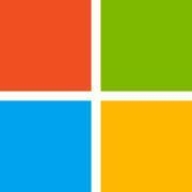

Find out what your peers are saying about Splunk, Wazuh, Microsoft and others in Security Information and Event Management (SIEM).
| Product | Market Share (%) |
|---|---|
| Microsoft Sentinel | 5.9% |
| Oracle Security Monitoring and Analytics Cloud Service | 0.6% |
| Other | 93.5% |

| Company Size | Count |
|---|---|
| Small Business | 37 |
| Midsize Enterprise | 20 |
| Large Enterprise | 41 |
Microsoft Sentinel is a scalable, cloud-native, security information event management (SIEM) and security orchestration automated response (SOAR) solution that lets you see and stop threats before they cause harm. Microsoft Sentinel delivers intelligent security analytics and threat intelligence across the enterprise, providing a single solution for alert detection, threat visibility, proactive hunting, and threat response. Eliminate security infrastructure setup and maintenance, and elastically scale to meet your security needs—while reducing IT costs. With Microsoft Sentinel, you can:
- Collect data at cloud scale—across all users, devices, applications, and infrastructure, both on-premises and in multiple clouds
- Detect previously uncovered threats and minimize false positives using analytics and unparalleled threat intelligence from Microsoft
- Investigate threats with AI and hunt suspicious activities at scale, tapping into decades of cybersecurity work at Microsoft
- Respond to incidents rapidly with built-in orchestration and automation of common tasks
To learn more about our solution, ask questions, and share feedback, join our Microsoft Security, Compliance and Identity Community.
Oracle Security Monitoring and Analytics Cloud Service is a comprehensive solution designed to provide organizations with advanced threat detection and response capabilities. This cloud-based service leverages machine learning and artificial intelligence to analyze vast amounts of security data in real time, enabling proactive identification and mitigation of potential threats.
With Oracle Security Monitoring and Analytics Cloud Service, organizations can gain deep visibility into their entire IT infrastructure, including on-premises and cloud environments. The service collects and correlates security data from various sources, such as logs, network traffic, and endpoint telemetry, to provide a holistic view of the security posture. The product's advanced analytics capabilities of this service enable the detection of both known and unknown threats.
By applying machine learning algorithms to the collected data, Oracle Security Monitoring and Analytics Cloud Service can identify patterns and anomalies that may indicate malicious activities. This proactive approach helps organizations stay ahead of emerging threats and minimize the risk of data breaches.
In addition to threat detection, this service also offers comprehensive incident response capabilities. When a potential threat is identified, Oracle Security Monitoring and Analytics Cloud Service provides detailed alerts and actionable insights to guide security teams in their response efforts. The service also offers automated response actions, allowing organizations to quickly contain and mitigate the impact of a security incident.
The product is built on a scalable and resilient cloud infrastructure, ensuring high availability and performance. The service integrates seamlessly with other Oracle security products, such as Oracle Identity and Access Management, to provide a comprehensive security ecosystem.
We monitor all Security Information and Event Management (SIEM) reviews to prevent fraudulent reviews and keep review quality high. We do not post reviews by company employees or direct competitors. We validate each review for authenticity via cross-reference with LinkedIn, and personal follow-up with the reviewer when necessary.